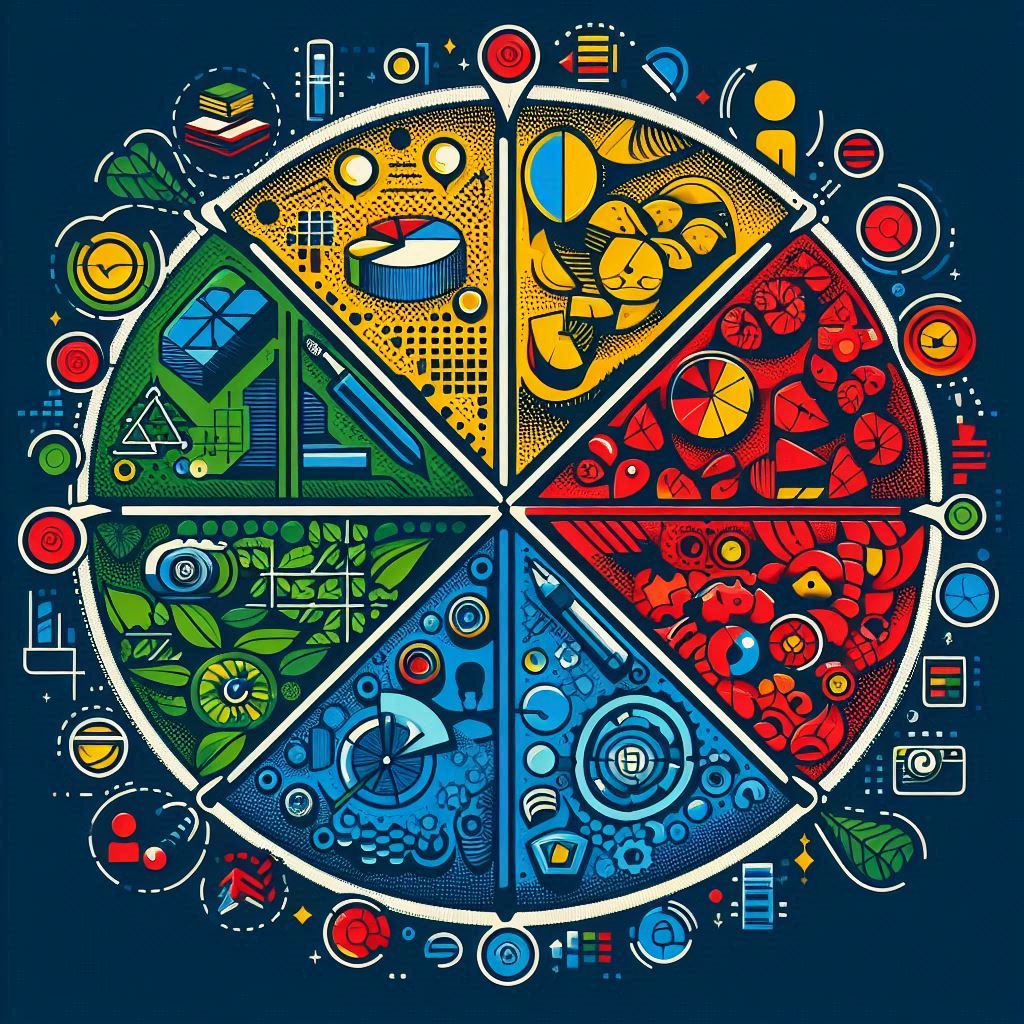The Art of Categorization: How Do You Categorize Customer Segments?
Grasping the intricacies of your audience is a critical aspect in formulating effective business strategies. By grouping customers based on a variety of criteria – demographical, geographical, behavioral, etc., businesses can devise carefully targeted strategies to attract and maintain their customer base. This article delves deep into the concept of customer classification strategies, illuminating the processes involved in successful customer segmentation.
When implemented correctly, these processes can assist businesses in making informed and strategically sound decisions, bolstering their marketing efforts and driving business growth.
Unpacking the Concept of Customer Segmentation
What is Customer Segmentation?
At its core, customer segmentation involves bifurcating a company’s customer base into groups sharing similar traits. This approach allows businesses to fine-tune their marketing, customer service, and sales efforts to better satisfy each group’s unique needs and preferences.
Why is Segmenting Customers Important?
Segmenting customers is a fundamental tool for businesses aiming to interact meaningfully with their target customers. It involves dividing a business’s customer base into distinct groups, each marked by common characteristics or behaviors. These segregations can significantly guide a brand’s messaging and help point toward potential new product or service avenues.
To employ effective customer segmentation, businesses should first use broad industry data and then delve deeper into the nuances of their customer base. Businesses can paint a comprehensive picture of their audience by looking for parallels among customers and employing diverse segmentation variables as necessary. Essential to this process is gathering customer data (either directly or indirectly), which can help build affluent, informative segments and personalize customer interactions.
Distinguishing Between Customer Segmentation and Market Segmentation
Both customer segmentation and market segmentation perform unique roles within a business strategy. While market segmentation focuses on attracting new customers and penetrating new markets – considering the entire market landscape, customer segmentation provides an in-depth view of a business’s existing customer base. This allows corporations to cultivate personalized experiences and nurture customer loyalty.
For operations, advanced customer segmentation allows for crafting tailored support experiences. Businesses can adapt their interactions to increase satisfaction by dissecting customers’ expectations and requirements. Further, targeted marketing campaigns can be developed thanks to customer segmentation. Numerous facets of customer segmentation exist – including demographic, behavioral, psychographic, geographic, and value-based segmentation.
Businesses should evaluate their internal data to determine which technique aligns best with their customers, employees, and business objectives. In brief, customer segmentation is an essential technique within a business’s strategic arsenal. It enables businesses to optimize customer support experiences, ameliorate operational efficiency, and design potent marketing campaigns better suited to their audience.
The Varied Types of Customer Segmentation
Demographic-Based Segmentation

As the name suggests, demographic segmentation is the practice of categorizing customers into groups based on cardinal life attributes. These include age, gender, income, education, and marital status. This type of segmentation can help brands effectively target market segments. For instance, a clothing brand may curate diverse product lines tailored to appeal to specific age groups.
Similarly, a travel agency may promote different vacation packages for various income segments. Access to such detailed customer demographic attributes allows businesses to customize their offerings, enhancing customer contentment and promoting increased loyalty.
Geographic-Based Segmentation

Geographic-based segmentation is the practice of dividing customers according to their geographical location. Analyzing geographic data can uncover regional trends and cultural variations to inform marketing strategies.
For example, a clothing retailer may find that residents in coastal regions have a stronger preference for beachwear, while folks living in colder climates might lean more towards winter clothing. Access to such granular regional data allows businesses to create precise marketing campaigns, offerings, and pricing strategies that cater to the needs of each geographic demographic.
Psychographic-Based Segmentation

Psychographic segmentation involves classifying customers according to their personality traits, attitudes, values, and interests. This form of categorization allows businesses to foster a deeper, more intimate relationship with their customers. For example, a business could leverage this information to modify its marketing efforts to appeal to an environmentally conscious segment of customers.
Similarly, a travel company could cater to a segment’s proclivity for adventure by developing specially tailored vacation packages. Psychographic segmentation allows businesses to mediate their customers’ specific needs and desires at a more personalized level.
Behavioral-Based Segmentation

Behavioral-based segmentation, as its name indicates, primarily focuses on customer behavior. This includes tendencies, product usage, purchasing habits, and other interaction patterns. Understanding these behavior patterns allows businesses to customize their marketing, sales, and customer service strategies.
For example, businesses can curate targeted emails based on customers’ browsing patterns or purchase history. By doing so, they can deliver personalized recommendations or enticing offers, increasing customer engagement, conversion rates, and overall customer satisfaction.
Technographic-Based Segmentation

Technographic-based segmentation is a technique that focuses on grouping customers based on their tech usage and preferences. Businesses can curate tailored marketing messages by understanding how customers interact with technology, from their choice of device (mobile or desktop) to their preferred apps. This approach increases engagement levels and significantly boosts click-through rates, conversion rates, and overall sales.
Needs-Based Segmentation

Needs-based segmentation involves bifurcating customers based on their specific product or service needs. By clearly understanding these diverse needs, businesses can devise targeted marketing strategies to better cater to their audience. For instance, an automotive company might classify customers based on their distinct requirements for fuel efficiency or safety features.
Focusing on satisfying customers’ needs can effectively drive company loyalty and satisfaction.
Value-Based Segmentation

Value-based segmentation is a strategy that divides customers based on their economic value to a business. For instance, a premium car brand might focus on marketing toward individuals ready to pay a high price for their vehicles. At the same time, a budget airline might emphasize appealing to price-conscious travelers. Businesses can enhance profitability and customer satisfaction by directing marketing efforts and product offerings toward specific customer groups.
The Underlying Reasons for Customer Segmentation
Boosting Brand Loyalty and Enhancing Customer Lifetime Value
Understanding your audience demographic keenly can massively boost brand loyalty and develop robust, enduring customer relationships. Customer segmentation aids in identifying new service opportunities and effectively streamlining the upkeep of customer relationships. The resulting customer groups guide the brand’s messaging and hint at potential new product or service opportunities.
Drawing boundaries between different customer groups enables businesses to deliver personalized experiences that align with each unique customer segment’s needs. This, in turn, aids in discovering fresh product or service opportunities, strengthening the overall quality of customer interaction.
Enabling Tailored Experiences on a Large Scale
The process of ‘Delivering Tailored Experiences at Scale’ heavily leans on customer segmentation. By parsing customers into distinct segments based on shared characteristics such as demographics, behaviors, or interests, businesses can offer personalized experiences that truly resonate with their audience. For instance, a clothing retailer can provide coveted product recommendations based on individual customer purchase habits, thereby driving engagement and conversions.

Vizologi is a revolutionary AI-generated business strategy tool that offers its users access to advanced features to create and refine start-up ideas quickly.
It generates limitless business ideas, gains insights on markets and competitors, and automates business plan creation.


